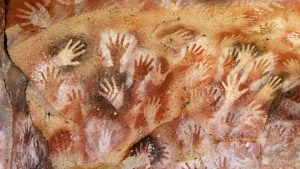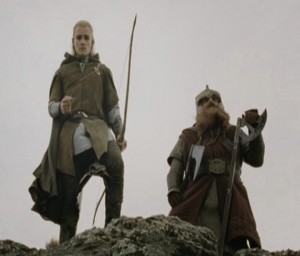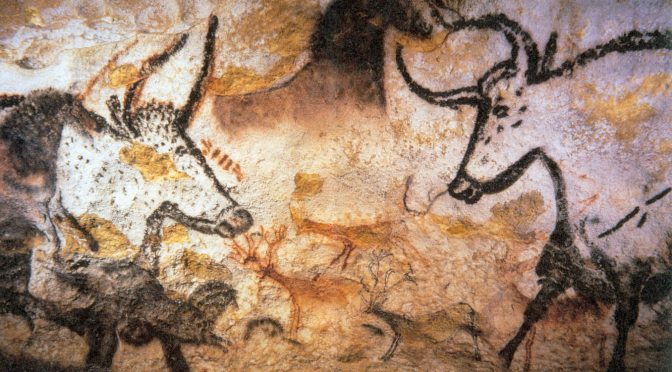Though it may sometimes take up too much of my time, one of the things I like to do most is to soak up random information and learn new things. I love to watch videos or read articles about science that are way above my pay grade. I’m fairly in tune with political debates and keep informed on current events around the world, particularly if they’re about countries I otherwise don’t know too much about. I’ve sat through discussions of psychology and sociology that really have very little to do with me but explain things about the world and the people in it. On the one hand, little if any of this is actually useful to me in my day to day life, but at the same time it’s something I can use to try to add more to my own work. As I’ve said many times before, anything can be used to inspire new writing – even if it’s sometimes peculiar.
And one of the fields I’m really fascinated in that I can see some real use to my work is psychology – particularly as it relates to the motives behind actions. This is great for figuring out character motivations, understanding why people think the way they do and what they may do because of it. If everyone is the hero of their own story, then how can people who see themselves as good do terrible things? If addicts know their addiction is hurting them, why can’t they stop? Besides being fascinating, it gives me insight that I hope to use to better my characters over time.
Though sometimes what really gets me is when I listen to these talks and it reflects a mirror back on myself. If finding out why someone else does something is useful, finding out why you do something yourself is invaluable. There are may facets to my personality which I’ve listened to someone take apart, but one facet in particular has gotten dissected more than any other in the talks I’ve listened to: why do we create art?
Leaving A Mark

It’s a question that comes up often because the mindset to become an artist often requires a somewhat unorthodox personality. Over the ages there’s been a lot of eccentrics with little in common who became artists, writers, and actors. Some more cynical minds have long proposed it’s a touch of narcissism (and, you know, fair enough), but then experts from a variety of fields will say that there’s more going on there. They don’t always agree on the specifics, but there’s generally enough of an overlap that some basics are always there. And, what sort of consensus do I see from my armchair?
Well, the human mind has a drive to create and a need to bring order to chaos. We’re hardwired to see images where they don’t really exist, to recognize patterns that aren’t exactly patterns, and imagine things that aren’t real. And we have a tendency to find ways to communicate that no other animal has before. We like to transfer ideas through not only sounds and movements but symbols that can make use of those creative parts of our brain. But, besides the utility of language, we also make art because it helps us process and cope with ideas… like the fact we are all going to die.

While it’s true that many an artist wants to be liked, maybe even loved (like a narcissist!), there’s more to it than that. Truthfully, we want to be fulfilled by our work – something all people can understand – and know that it (we) mattered. Ever since we gained the ability to think about ideas greater than ourselves, humanity has wondered what our purpose happens to be. For some that purpose can be found in religion. For others it can be found in the work we do. But for artists, some of it is found in creating something that may be remembered even after we’re gone.
Leaving our mark has always been a big part of being human. Even before the written word there were cave paintings and carvings of things that we felt deserved attention. And not all of it was about making sure that we ourselves were remembered, just what was important to us. The statues of gods, heroes, or figures we admired have littered the ancient world. Ideas of philosophy, ideology, and society are expressed through ancient works. Just recently I pointed out how Plato created Atlantis as a foil to demonstrate his ideal form of government in “The Republic”. And when you look south of Greece you find some of the greatest examples of “witness me” that have ever been constructed.

The Egyptians were damn aware that life was finite and the majority of what’s left of their civilization was dedicated to that mortality. Tombs, statues, and epic monuments were constructed to make sure that no one, no matter how much time had passed, could forget the people inside. Yes, it’s true that was in part just a narcissistic endeavor, but people do it independently all the time as well. Memorials are just kind of a natural part of humanity. We leave epitaphs for our lost loved ones, build small shrines to them, and sometimes make grand gestures so others will have noticed. Likewise, artists will occasionally to dedicate our work to someone – because even if it doesn’t mean much to anyone at the time, someone will know they existed.
I will admit that sometimes means memorializing ourselves as well with memoirs and non-fiction accounts of our lives. But for people who work on fiction or in visual arts, the focus is rarely on ourselves and instead on the things we imagined or felt passionately about. We create characters who embody something we want others to see, events that reflect situations in our lives, or scenarios that help us process what we couldn’t quite process normally. And though these things may sometimes seem trivial, the impact they can leave, the thing we hope to accomplish, can be greater than one would imagine.
The mark left by truly great works is often something you can’t quite measure in a concise fashion. Could we really say that the Lord of the Rings really expresses a specific idea? Well, no. But it could definitely be argued that all the research, attention to detail, and obsessive description from Tolkien gave us an idea of the things that were important to him. How many people today would really know much about elves or dwarves if not for the fact they bickered endlessly at each other in Tolkien’s works?

As I pointed out once before, much of what we know of these creatures came from Tolkien but was originated with the Norse – a religion that had no real written record until long after it fell out of practice. Without his work, maybe a lot of us wouldn’t really know much about them, or would have very different views on what they are. Recall, for instance, that before his books a lot of people associated elves specifically with a rather different sort of figure.

So even in our works of pure entertainment and flights of fancy, we leave marks on the world and we can express the things important to us. We are immortalizing something that has touched us and doing what we can to try to touch others (and not in the inappropriate ways). And while it’s easy to say that’s just for the positive feedback of the here and now, I think more than anything we just want to know that we contributed something.
In a day and age where it’s easy to feel like we have little purpose or function, and occasionally worry about a time when we might have none at all, the idea that you can use a talent to leave something to the world is enticing. It’s really the same sort of mentality that drives inventors, engineers, architects and so many other professions. There’s a slight taste of immortality involved in the creation of something. And, while some creations are going to be more noteworthy than others, the desire to create something…
Is certainly one that we can all understand.
(I write novels and dabble in screenplays. Please come to twitter and acknowledge I exist!)







